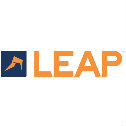These days, using the internet or a smartphone app to book a taxi, check-in for a flight or manage your personal finances has become second nature to most of us and handling legal transactions digitally should be no different. In fact, the emergence of eSignatures is making this an ever-growing reality.
In an increasingly competitive market, where there is growing client expectation around price and service efficiency, there is a pressing need for law firms to embrace digitalisation. Electronic signatures are proving to be a key part of digitalisation, welcomed by both lawyers and their clients. By offering convenience and streamlining the transaction process, law firms can gain a professional edge. There are various types of eSignature, including ones that clients can sign directly to their electronic devices, signatures created using their devices, image uploads of their signatures or a signature that they already have saved.
There was initially some uncertainty as to whether such technology would satisfy the necessary legal requirements. However, the Law Commission confirmed in August 2018 that electronic signatures can be used to sign formal legal contracts under English law. This provided a green light to law firms to digitalise their practices further still.
Leading legal software providers, including LEAP, are helping law firms on their digitalisation journey by developing software and including digital signature capabilities throughout their extensive library of automated forms and precedents.
Through its integration with the secure document management system, LawConnect, LEAP’s practice management software allows lawyers to share documents and obtain signatures via DocuSign anywhere in the world. Providing access to such technology has greatly speeded up the collaboration process with clients.
Much like traditional handwritten signatures, eSignatures are unique to each signatory. DocuSign follows a specific protocol known as Public Key Infrastructure (PKI) that uses a mathematical algorithm to generate a pair of keys – one public and one private.
Every eSignature is created using the signatory’s private key which is always kept securely by the signatory. The mathematical algorithm acts like a cipher, creating data matching the signed document and encrypting that data. The encrypted data is the digital signature and is time stamped so that if the document is subsequently changed, the digital signature is then invalidated.
The benefits of using eSignatures are three-fold as the technology offers law firms increased efficiency, security and cost-savings. As part of the ongoing drive towards digitalisation, eSignatures are an important step and the benefits of this technology are invaluable to the legal profession.
This article was submitted to be published by Leap UK as part of their advertising agreement with Today’s Conveyancer. The views expressed in this article are those of the submitter and not those of Today’s Conveyancer.




















